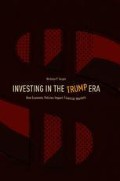Abstract
This chapter begins by reviewing the Fed’s greatest achievement over the past four decades—namely, reining in inflation and inflation expectations in the early 1980s under Paul Volcker’s leadership and continuing with Alan Greenspan. This set the stage for a steady decline in interest rates that fueled the economy and financial markets until 1999.
As inflation declined, however, credit expansion proliferated and a series of asset bubbles ensued, which culminated in the 2008 Global Financial Crisis and Great Recession.
Access this chapter
Tax calculation will be finalised at checkout
Purchases are for personal use only
Notes
- 1.
The Fed was structured to ensure monetary policy decisions are not subject to political pressures that could lead to undesirable outcomes; hence, members of the Board of Governors are appointed for staggered 14-year terms, and the Board chair is appointed by the President for a four-year term.
- 2.
The Keynesian interpretation is that monetary policy was ineffective when interest rates were close to zero—the so-called liquidity trap . The monetarist response, however, is that Fed policy was too restrictive and by allowing banks to fail, the Fed permitted the money supply to collapse.
- 3.
For a further discussion, see Nicholas Sargen, Global Shocks, Chap. 2.
- 4.
Benjamin Bernanke , “The Great Moderation,” Board of Governors of the Federal Reserve System, February 20, 2004.
- 5.
Among the foremost critics were William White and Claudio Borio of the Bank for International Settlements, who repeatedly warned that excessive credit creation had increased the risk of financial instability.
- 6.
William White , Bank for International settlements, “Wither Monetary and Financial Stability? The Implications of Evolving Policy Regimes,” presented at Jackson Hole, Wyoming Symposium, August 28–30, 2003.
- 7.
Two other policy developments also helped restore confidence in the financial system. One was the conversion of the Troubled Asset Relief Program (TARP) into a vehicle to inject capital into financial institutions. The other was stress tests of financial institutions ability to absorb shocks that were conducted by the Federal Reserve.
- 8.
Milton Friedman and Anna Schwartz , A Monetary History of the United States, Princeton University Press, 1963.
- 9.
Ibid, p. 132.
Author information
Authors and Affiliations
Rights and permissions
Copyright information
© 2018 The Author(s)
About this chapter
Cite this chapter
Sargen, N.P. (2018). Changes in US Monetary Policy: Past and Prospective. In: Investing in the Trump Era. Palgrave Macmillan, Cham. https://doi.org/10.1007/978-3-319-76045-2_7
Download citation
DOI: https://doi.org/10.1007/978-3-319-76045-2_7
Published:
Publisher Name: Palgrave Macmillan, Cham
Print ISBN: 978-3-319-76044-5
Online ISBN: 978-3-319-76045-2
eBook Packages: Economics and FinanceEconomics and Finance (R0)

